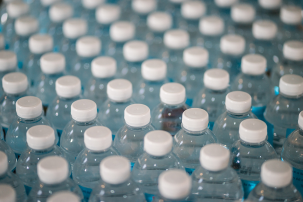Lesson summary
Through class discussion, independent art and literacy exercises students are asked to think about the environmental and health consequences of water choices and decide on their preference for accessing drinking water.
Learning intentions:
Students will...
- use information to make choices about drinking water
- consider personal health issues concerning consumption of water
- information about the environmental impact of purchased bottled water when considering water choices.
Lesson guides and printables
Curriculum links
Select your curriculum from the options below.
Lesson details
Curriculum mapping
Australian curriculum content descriptions:
Year 3 Science:
- Science knowledge helps people to understand the effect of their actions (ACSHE051)
Year 3 English:
- Plan, draft and publish imaginative, informative and persuasive texts demonstrating increasing control over text structures and language features and selecting print, and multimodal elements appropriate to the audience and purpose (ACELY1682)
Year 3 Mathematics:
- Recognise, model, represent and order numbers to at least 10 000 (ACMNA052)
Year 4 Science:
- Science knowledge helps people to understand the effect of their actions (ACSHE062)
Year 4 English:
- Plan, draft and publish imaginative, informative and persuasive texts containing key information and supporting details for a widening range of audiences, demonstrating increasing control over text structures and language features (ACELY1694)
Year 4 Mathematics:
- Recognise, represent and order numbers to at least tens of thousands (ACMNA072)
Syllabus outcomes: ST2-11LW, EN2-2A, MA2‑1WM, MA2‑2WM, MA2‑3WM, MA2‑4NA.
Indoor or outdoor activity: Indoor
Time required: 20 mins
Learning areas addressed: English, Geography, Health and physical education
Level of teacher scaffolding: Lead students in a discussion around bottled water.
Homework and extension opportunities: This activity includes opportunities for extension.
Resources required
- Internet access
- Art and writing materials
- An example of purchase bottled water and a reusable drinking bottle.
Additional info
This is an original Cool.org lesson. Facts and figures in these lessons may have changed since this lesson was published. We always endeavour to update our resources in a timely manner, but if you see an error or issue in our resources please get in touch with us.


Welcome back!
Don't have an account yet?
Log in with:
Create your free Cool.org account.
Many of our resources are free, with an option to upgrade to Cool+ for premium content.
Already have an account?
Sign up with:
By signing up you accept Cool.org's Terms and Conditions(Opens in new tab) and Privacy Policy(Opens in new tab).